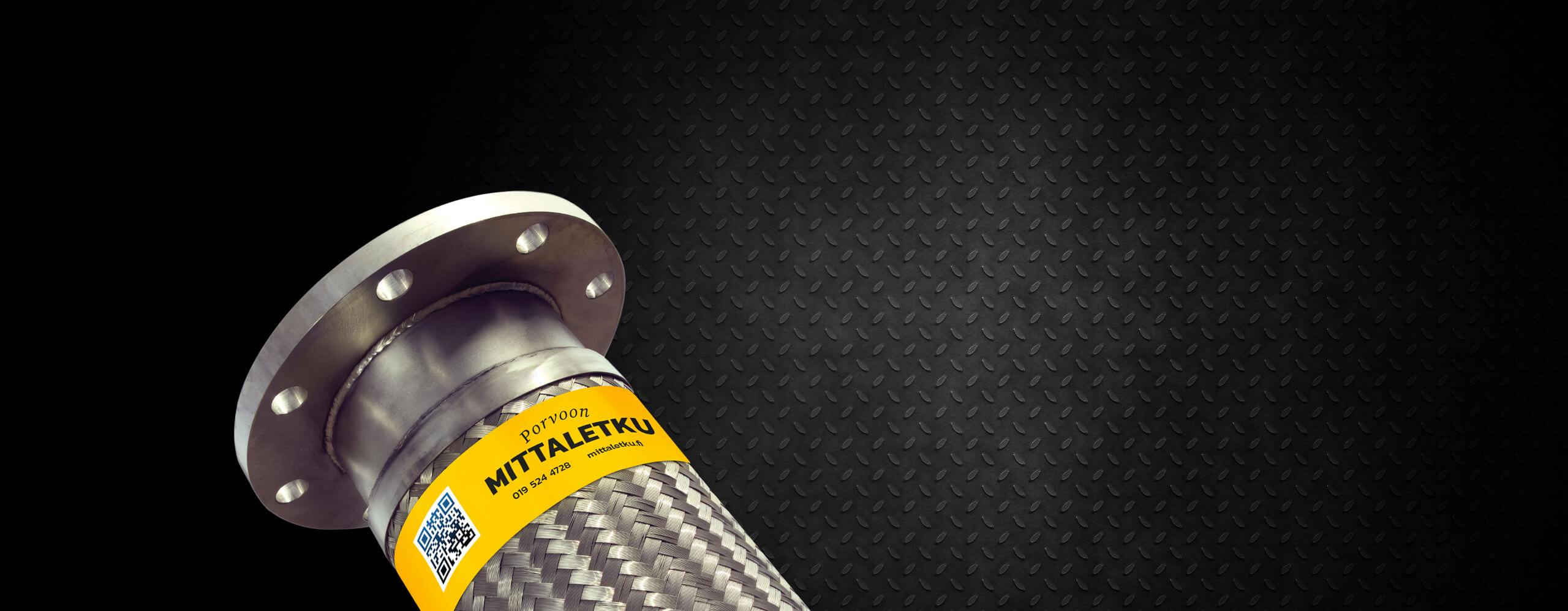Uncategorized
Full metal hoses

Basic information on all-metal hoses and technical properties. The inner material of all metal hoses is AISI 316.
The function of the hose is to act as a flexible element in the transfer of matter. There are many sites where the material being transferred is not hazardous to the hose but, the environment and conditions are so demanding that a full metal hose is required. The chemical resistance of the acid-resistant hose is very wide.
In the food industry, on the other hand, it is very often the case that the substance to be transferred in the hose itself is not dangerous at all, but the solutions used to clean the hose are so harsh that it requires AISI 316 chemical resistance. In the all-metal hose, hot steam can be used to clean the hose. A high-quality and properly made all-metal hose easily lasts over 550 ° and at those temperatures a really clean hose is starting to come.
This makes it possible to use the all-metal hose as a steam hose. The absolute advantage of the hose is that it can be filled with saturated or superheated steam. There are a lot of equipment and items in the industry that use a full metal hose as a steam hose. By comparison, the rubber EN ISO 6134 high-pressure steam hose can only withstand a maximum of 232 ° C of instantaneously superheated steam, while the all-metal hose withstands more than 550 ° C. There is a table for both hose types that shows the correction factor for the pressure resistance of the hose as the temperature rises.
When it comes to all-metal hose, the correction factor DN25, or one-inch 25mm hose at 300 °, is 0.53. That is, in Finnish all this pressure resistance of a 25mm steel braid with a full metal hose is 50 BAR and a safety factor of 4 it gives an explosion pressure which is then 200BAR.
Calculation formula for 300 degrees 1 ”hose: 0.53 x 50Bar = 26.5 BAR x4 = explosion pressure
With this calculation formula, the limit values for the whole metal hose at high temperatures can be easily found. This ensures safe use of the hoses. The steel braid in the steel braided hose makes the hose pressure resistant. Adding steel braided layers provides more pressure resistance to the hose.
Making connections to all-metal hoses requires really solid welding skills. The metal accordion hose and steel braid inside the steel braid are welded to one of the pieces. The absolute advantage in welding is that almost anything can be welded to it: BSP thread, DIN flange, Sae flange or kamlok connector
In this context, it is necessary to add another important feature that an all-metal hose has. It's a really light hose to use against what is usually thought. Due to its structure, the hose slides on different surfaces, while the rubber surface causes friction. An inch hose with a pressure resistance of 50 BAR weighs 0.8 kg per meter while a 20 bar hose according to the EN12115 standard easily weighs 10-20% more.

